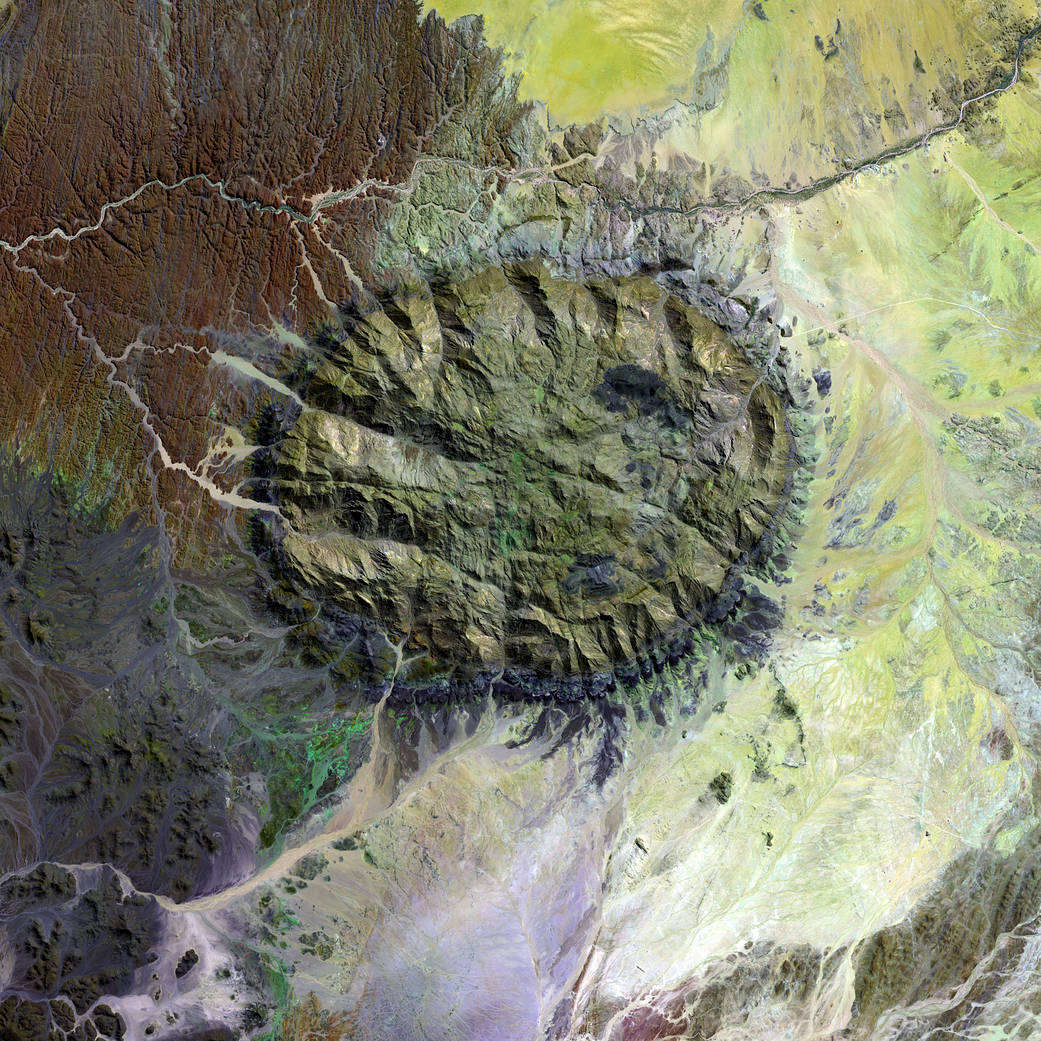
Over 120 million years ago, a single mass of granite punched through the Earth’s crust and intruded into the heart of the Namib Desert in what is now northern Namibia. Known as Daures or the burning mountain by Namibians, the mountain of rock also is called the Brandberg Massif and towers over the arid desert below. A ring of dark, steep-sided rocks forced upward during the mountain’s arrival encircles the granite intruder.
The mountain’s volcanism has long since stilled, but the granite core left behind apparently glows red in the light of the setting sun. The formation is a remnant of a long period of tumultuous volcanic and geologic activity on Earth during which the southern super-continent of Gondwana was splitting apart.
The mountain influences the local climate, drawing more rain to its flanks than the desert below receives. The rain filters into the mountain’s deep crevices and slowly seeps out through springs. Unique plant and animal communities thrive in its high-altitude environment, and prehistoric cave paintings decorate walls hidden in the steep cliffs that gouge the mountain.
To the southwest of Brandberg Massif, an older and more-eroded granite intrusion blends in subtly with the desert landscape, while along the Ugab River at upper left, cracks line the brown face of an ancient plain of rock transformed into gneiss by heat, pressure, and time.Image credit: NASA/USGS



























